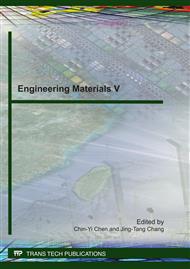p.81
p.90
p.98
p.106
p.112
p.119
p.124
p.132
p.143
Modelling the Effects of Material Property and Dimension on the Heating of Silicon with Induction Directional Casting Furnace
Abstract:
Directional Casting of silicon is a cost effective process to grow multi-crystalline Si ingots for wafers of solar cells. An appropriate melting process of polycrystalline silicon is closely related to the material properties and the size of graphite susceptors. These parameters have great influence not only on the melting temperature of silicon melt but also on the efficiency of induction heating, impurity distribution, dendrite and the direction of crystalline grains, which ultimately affect the properties of the solar cells. Therefore, in order to obtain good quality and energy efficiency of growth of polycrystalline silicon, one needs to know how the temperature fields relate to the processing parameters such as different sizes and properties of graphite susceptors in the furnace. In this paper, the influences of different properties such as density, electrical conductivity, thickness of graphite susceptor and cooling base-plate on the temperature of silicon with induction heating have been studied. To have an optimized control of processing parameters, a finite element-based software was used to simulate the temperature distribution of silicon melt in a polycrystalline vacuum induction refining furnace. The simulation takes into account the interaction of the induced eddy current and the heat transfer coupling in the vacuum induction furnace. Some of the modelling results are summarized as follows: 1. The material properties of the graphite susceptor have great influence on the temperature distribution. 2. The higher the operating frequency of the current, the sooner it reaches the melting temperature. 3. Base-plate made of stainless steel 304 performs better than the copper base-plate for the control of temperature distribution. 4. There exists an optimal thickness of the graphite susceptor, and the rise of temperature is not linearly proportional to the thickness of the graphite susceptor.
Info:
Periodical:
Pages:
132-142
Citation:
Online since:
April 2011
Authors:
Price:
Сopyright:
© 2011 Trans Tech Publications Ltd. All Rights Reserved
Share:
Citation:


